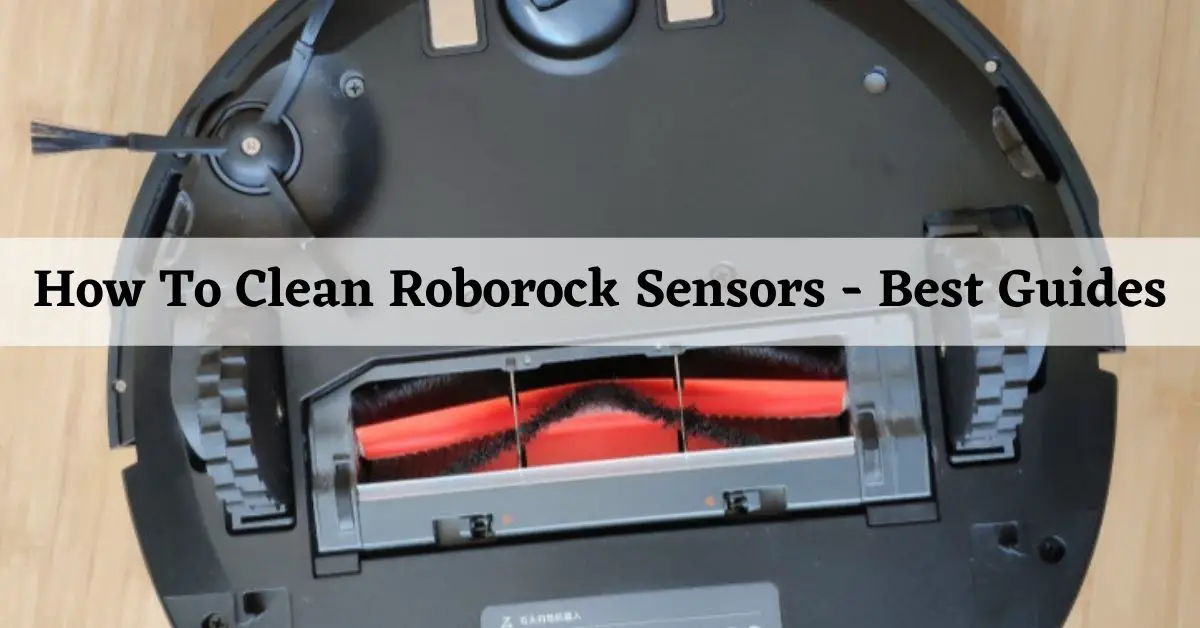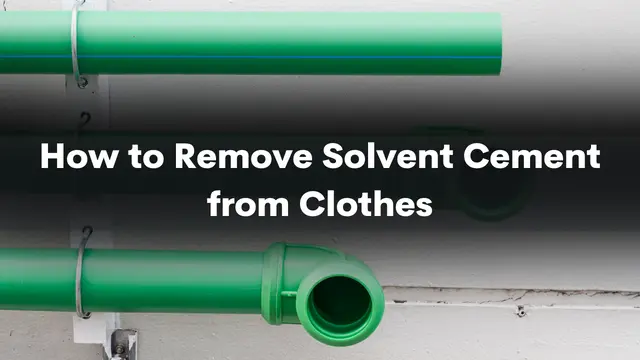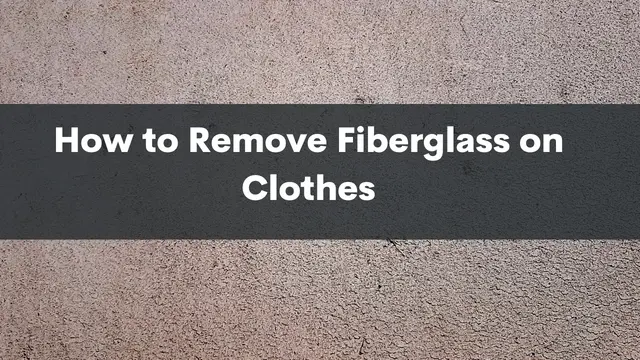It’s incredible how the Roborock robotic cleaner finds its way around a home while cleaning. What allows the robot to do that is the sensors. These sensors enable smooth navigation avoiding obstacles as the robotic vacuum moves room to room cleaning.
But do you know you need to keep the Roborock sensors clean to function at an optimum level? This guide is for you if you don’t know how to clean Roborock sensors.
Let’s look at how to do that.
Contents
Cleaning Roborock Sensors – Tools & Techniques
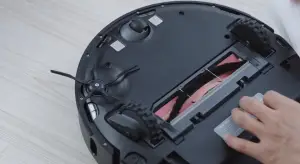
What You Need
All you need is a dry lint-free cloth. It should be absorbent to ensure it picks up all the dirt specks. Avoid using abrasive materials because they might damage the sensors.
Paper towels are also not a good option since they might remove the sensitivity of the sensors.
But before you get started, where are the sensors on the Roborock? Are they on the sides or at the bottom? Let’s find out.
Where are The Sensors in a Roborock?
The Roborock has several sensors, each at differing locations. Here’s where to spot each of them on the vacuum.
- Collision Sensors
You will find these sensors on the front bumper of the vacuum. It helps the vacuum avoid bumping into obstacles as it cleans.
- Dock Station Sensors
These sensors are also on the front of the bumper. It is in the center of the bumper and is oval. Its work enables the vacuum to find its way to the dock station to recharge or dock.
- Charging Contact Pieces
These sensors ensure the vacuum charges successfully. They touch the charging terminals on the dock station to charge the vacuum once it docks. The sensors are on the sides of the front wheel.
- The Wall Sensors
This sensor determines the distance the robot vacuum is from the closest walls. Doing that prevents the robot from clattering into walls as it spruces up your home.
The sensors are small ovals on each side of the vacuum.
- Cliff Sensors
These are four reflective sensors at the bottom of the robotic vacuum. You’ll find it on the front half of the bottom of the vacuum. Turn over the vacuum to see the four sensors sunken inside the front half of the vacuum.
Note that there are many models of Roborock vacuums. So, it’s likely that the locations for each of the sensors might vary. The locations provided here are only a general overview of where you can find them in most models.
But if you have a different model, then the manual will be of great help. Check the manual for the location of the sensors. The manual will also contain information on how to clean the sensors.
If you can’t get the manual, look up instructions online for that specific model.
Cleaning the Sensors
Once you have determined the locations for each sensor, cleaning is a simple one-step approach. Take the lint-free piece of cloth and wipe each of the sensors gently.
Repeat until you’re sure they’re all clean. Now your robotic vacuum won’t struggle to find its way around your house. It also won’t randomly bump into walls or obstacles in the house.
How Often Should You Clean Roborock Sensors?
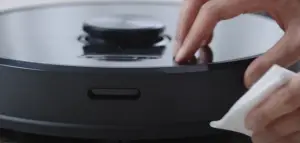
To ensure the sensors are in perfect shape, clean them at least once a week. If you take your time cleaning the sensors, the vacuum struggles to find its way on the floor as it cleans.
Therefore, the best policy is to clean them as regularly as possible. Fortunately, it isn’t that hard a process.
How Do You Know the Sensors Need Cleaning?
It’s easy to tell when your Roborock sensors need cleaning. The vacuum will often point out the problem for you to see. The Roborock S6, for instance, won’t seem as intelligent as you’d want. Selective room cleaning will be a chore, and the suction might become an issue.
Here is what to expect when the sensors of your Roborock are full of dirt and debris:
- The vacuum misses some spots when cleaning
- The vacuum can’t find its way to the dock station
- The vacuum keeps bumping into obstacles
- The vacuum can’t tell how far it is from the wall and bumps into it
When you see the above signs, it’s time to clean your Roborock’s sensors.
Important Points to Note
- Don’t ever use a damp cloth to clean the sensors. That will not only damage them but might also void your warranty.
- Once you damage the sensors, there’s no going back. The vacuum won’t work as before, and you’ll have to get a replacement. You wouldn’t do that.
How to Maintain Roborock Vacuums
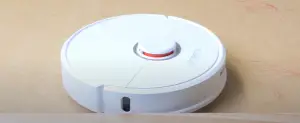
Cleaning the Roborock sensors isn’t the only thing you can do to ensure it serves you well. Washing the other parts is integral to the proper functioning of the vacuum.
Dirt and debris will often gather in the filter and the dust bin. That means regularly cleaning them as well. Always empty the dustbin as soon as it fills up.
Also, clean it out regularly. You can use water for the dust bin since it isn’t as sensitive as the sensors. What you shouldn’t use is a scrubber or some other abrasive material.
The filter also needs cleaning with water. The filter traps lots of dust particles that might escape from your vacuum. Use only water to clean the vacuum’s filter. You don’t need a cleaning solution since Roborock hasn’t advised using one.
If you do all we have advised here, your vacuum will serve you for a long time. No one wants to use a vacuum only for a few short months. They cost lots of money for that to happen!
Last update on 2024-07-12 / Affiliate links / Images from Amazon Product Advertising API
FAQ About How to Clean Roborock Sensors
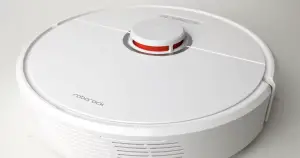
Where Are the Sensors on Roborock S5?
The sensors on Roborock S5 are located at the bottom of the vacuum. These sensors help the vacuum to map the layout of the room and to avoid obstacles.
Are Roborock Filters Washable?
The Roborock filters are not washable, but they are removable and can be replaced. The filters help to clean the air as it is expelled from the vacuum cleaner. They are made of a dense material that traps dirt, dust, and other debris.
How Do You Get the Dust Out of Roborock?
To get the dust out of Roborock, one must first open up the vacuum cleaner and locate the dustbin. The dustbin is a small, square container that sits in the center of the vacuum. Next, one must remove the lid from the dustbin and dump out any of the accumulated dust. Finally, one can replace the lid on the dustbin and put the vacuum back together.
Can I Wash the Roborock Brush?
The Roborock brush is a detachable brush that can be washed using water and detergent. The brush is placed in the top rack of the dishwasher or can be hand-washed using soap and water.
How Do I Clean My S7 Sensor?
First, remove the cover of the sensor. There is a small notch on one end that you can use to pry it open. Be careful not to damage the seal. Next, use a q-tip or other soft cloth to clean the sensor. You may also want to use a mild detergent if the dirt is particularly stubborn. Finally, replace the cover and make sure it is properly sealed.
How Do You Clean a Roborock HEPA Filter?
To clean a Roborock HEPA filter, one must remove the filter from the vacuum and soak it in warm water. It is important to agitate the filter and loosen any dirt or debris that may be trapped inside. After soaking, the filter should be rinsed off with clean water and allowed to air dry.
Why Does My Roborock Smell?
There could be a few reasons why your Roborock smells. One possibility is that the smell is coming from the dustbin. If there is too much build-up in the bin, it can cause the robot to smell bad. You can try cleaning out the bin regularly to see if that helps. Another possibility is that the smell is coming from the filter. Over time, the filter can become clogged with dust and other debris, which can cause it to smell bad.
Why Does Roborock Stop Working After a Few Minutes?
Most likely, the Roborock is not getting sufficient power to function. This may be due to a faulty battery, a disconnected power cord, or something else. Without a properly functioning battery or power source, the Roborock will not be able to operate.
Final Thoughts
We hope this article has been an eye-opener if you didn’t know how to clean Roborock sensors. It is a simple process once you locate the sensors. Remember always to use a dry lint-free cloth to wipe the sensors. Do this every week, and your vacuum won’t ever lose its way around your home as it cleans.
Relevant Resources:
